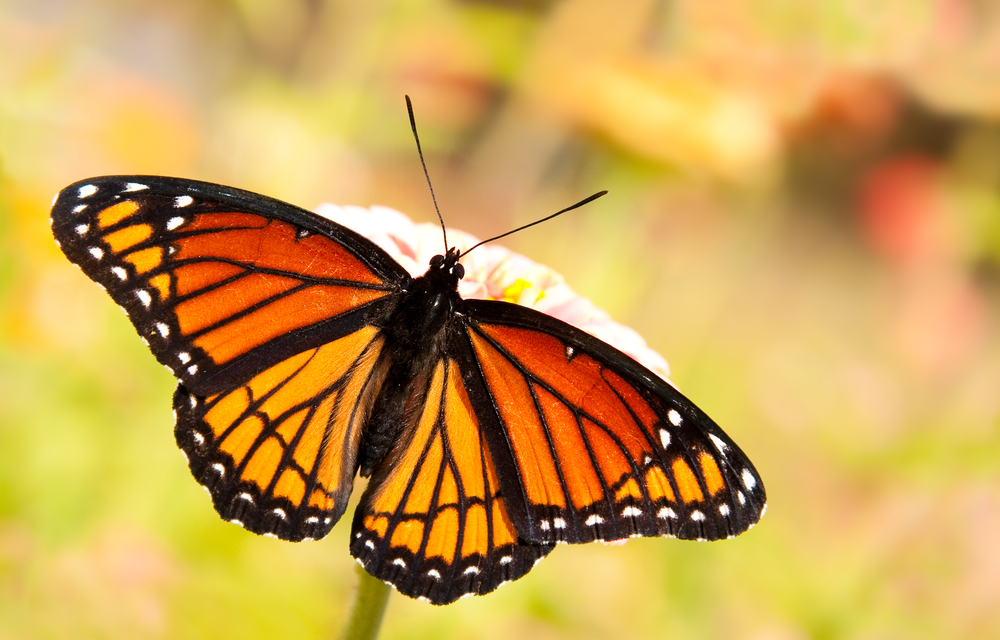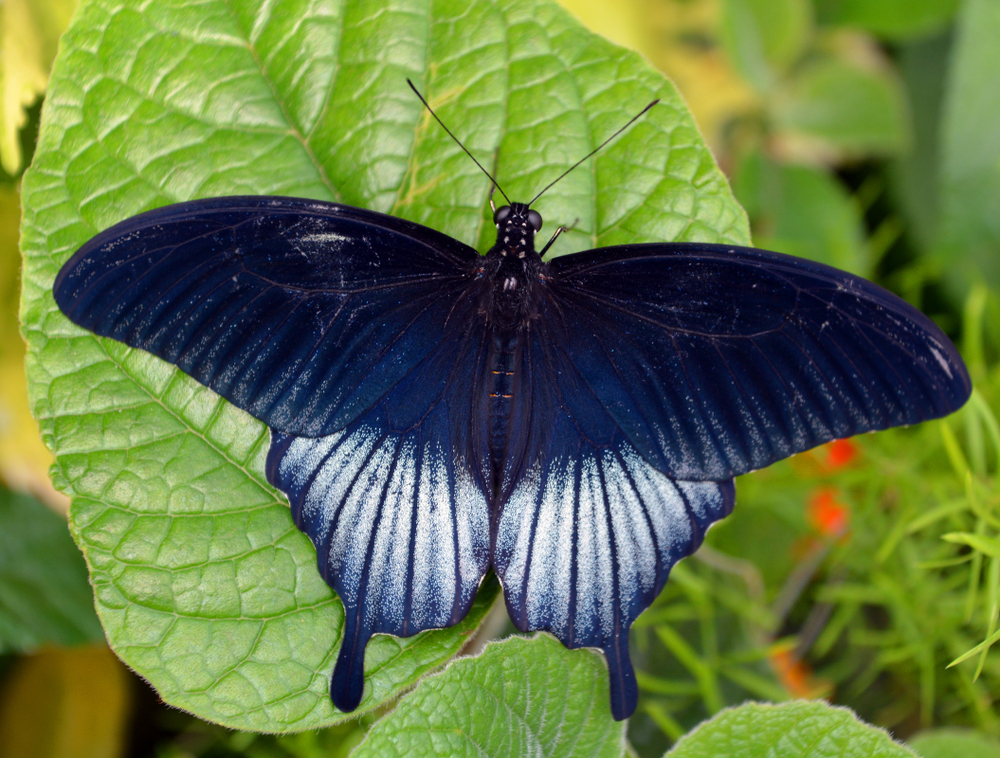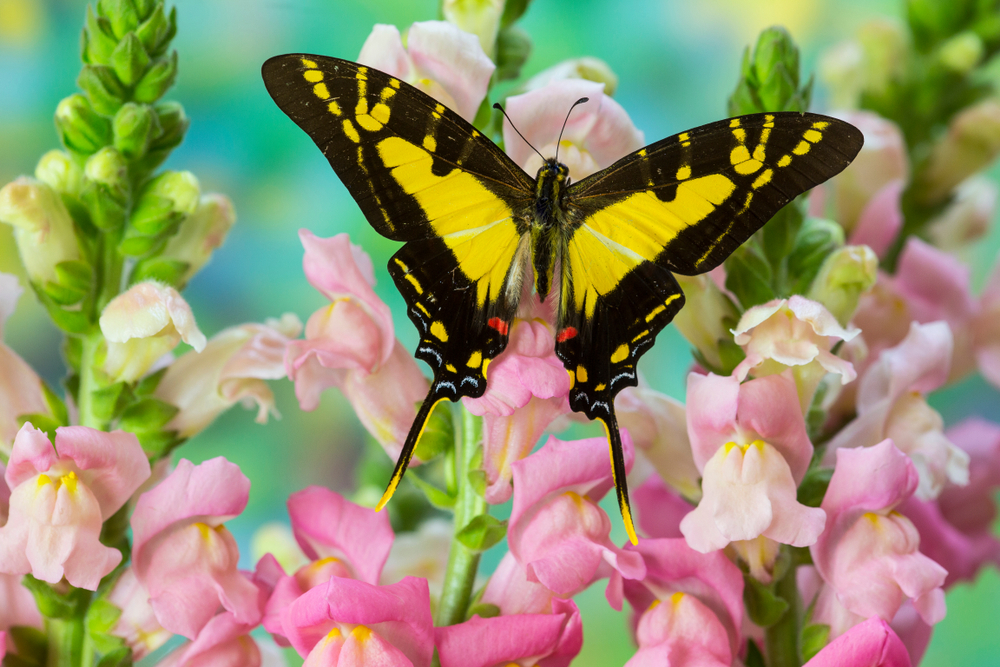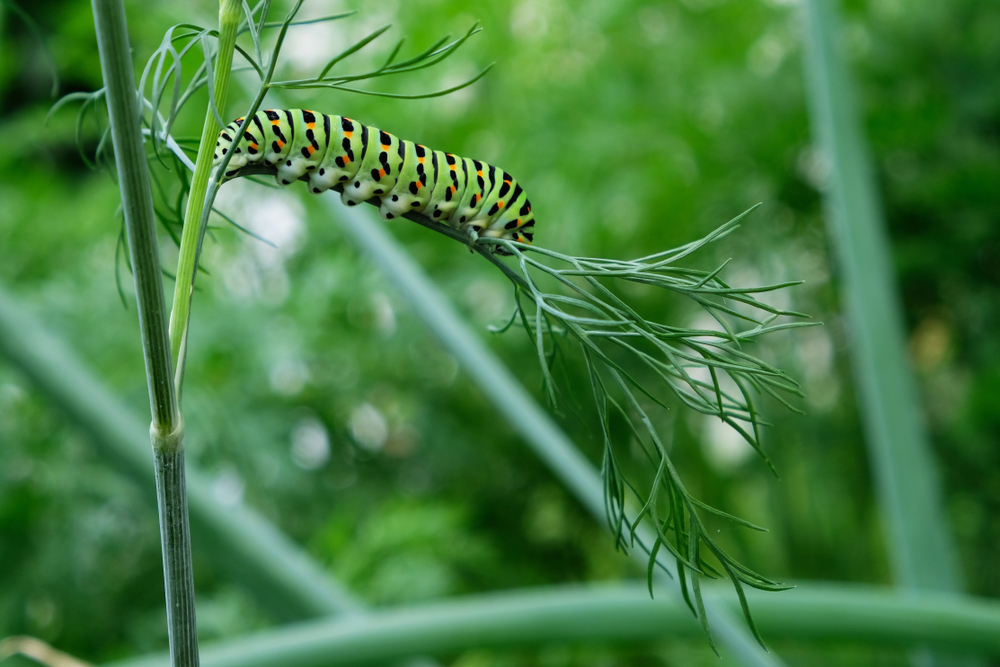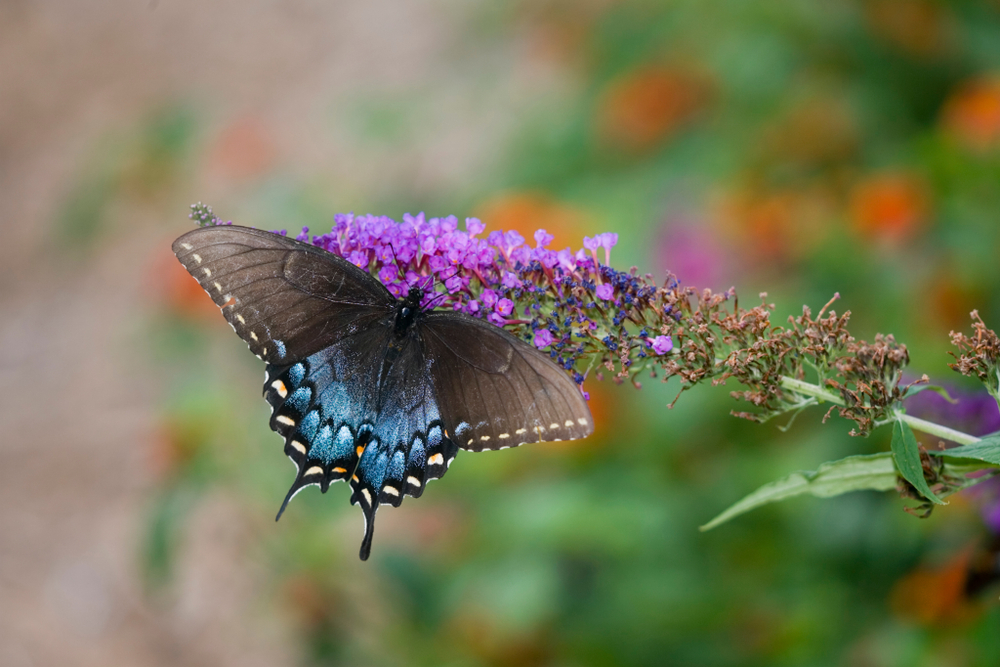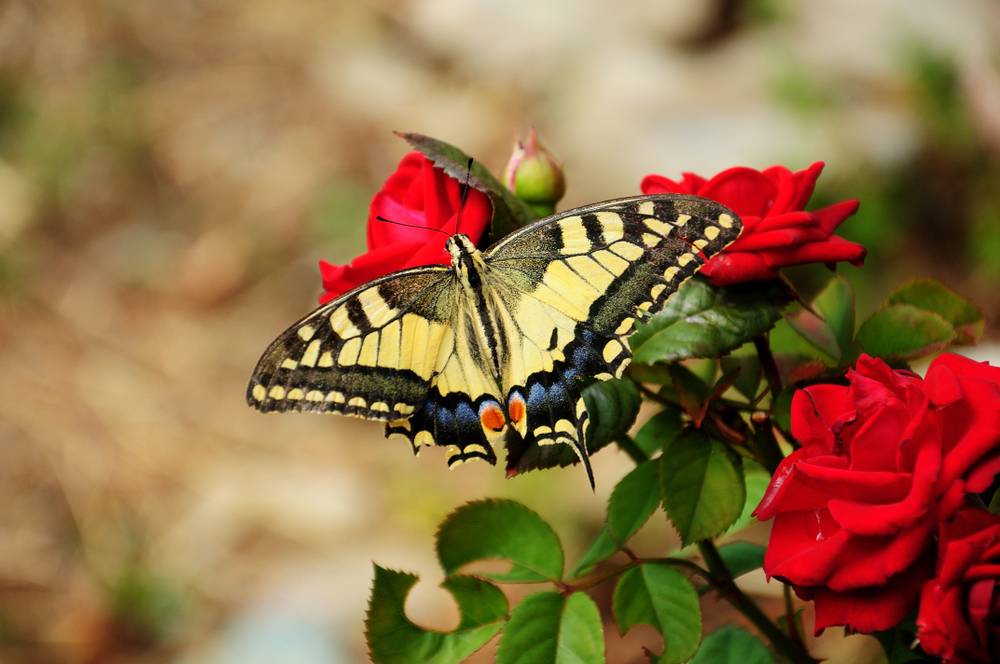Swallowtail Butterflies belong to the family Papilionidae, and within this family, there are numerous species and subspecies. There are over 550 recognized species of Swallowtail Butterflies worldwide. These species are distributed across various regions and continents.
About
The Swallowtail is a captivating group of butterflies belonging to the family Papilionidae, which is one of the most diverse and widespread butterfly families in the world. They are recognized for their distinctive wing shapes and vibrant colors, making them popular subjects among butterfly enthusiasts and collectors.
Swallowtails are classified under the following taxonomic hierarchy, Phylum (Arthropoda), Class Insecta, Order Lepidoptera, and Family Papilionidae (Swallowtail Butterflies).
Within this family, there are numerous species and subspecies, each with its own unique characteristics and geographic distribution. Swallowtails are known for their prominent “tails” on their hindwings, which resemble the long, graceful tail feathers of swallows, giving them their name.
These butterflies are renowned for their beauty and diversity, with species found on almost every continent, except Antarctica. Swallowtails often exhibit striking coloration and intricate wing patterns, making them a delight to observe in the wild and to rear in butterfly gardens.
The Swallowtail is not only admired for its aesthetics but also its ecological importance as pollinator. They play a significant role in the pollination of various plant species, contributing to the health and biodiversity of ecosystems where they reside. Their presence adds vibrancy to the natural world and highlights the wonders of insect life.
Physical Characteristics
Swallowtail butterflies exhibit a wide range of physical appearances, but there are some common characteristics shared by many species:
Physical Appearance:
- Size: Swallowtails vary in size, with wingspans typically ranging from 2 to 6 inches (5 to 15 cm). Some larger species can have even greater wingspans.
- Wing Shape: Swallowtails are known for their distinctive wing shape, with elongated hindwings that often feature “tails” resembling the tails of swallows, from which they get their name.
- Coloration: They display a variety of colors and patterns. Many species have vibrant colors, including shades of yellow, black, blue, green, and red. Some have striking eye spots on their wings.
- Markings: Swallowtails often have bold markings and patterns on their wings, which can vary greatly between species. These markings may serve as visual signals to predators or potential mates.
- Tails: The tails on their hindwings are a notable characteristic. These tails can vary in length and shape, adding to the butterfly’s elegance.
Weight and Size (Approximate):
- Weight: The weight of a Swallowtail butterfly is quite minimal, typically ranging from a fraction of an ounce to a few grams. Exact weights can vary by species.
- Size: In metric units, their wingspans range from approximately 5 to 15 centimeters, with some larger species exceeding 15 centimeters.
It’s important to note that the physical characteristics, including size and coloration, can vary significantly among different Swallowtail species. Their diversity in appearance is one of the reasons they are so admired by butterfly enthusiasts and researchers.
Reproduction
The reproductive cycle of Swallowtail butterflies, like other butterflies, goes through several stages, but it doesn’t involve gestation as in mammals. Instead, it includes the following phases:
- Egg Stage:
- Female Swallowtails lay eggs on suitable host plants. The choice of host plant can vary by species.
- The eggs are typically small, round, and often have distinct colors or patterns. The number of eggs laid by a female can vary but is often in the range of dozens to hundreds.
- Larval (Caterpillar) Stage:
- Once the eggs hatch, they give rise to caterpillars.
- Swallowtail caterpillars undergo multiple molts (shedding their exoskeleton) as they grow and develop.
- During this stage, caterpillars primarily feed on the leaves of their host plants, accumulating nutrients and energy for their next phase of development.
- Pupal (Chrysalis) Stage:
- After the caterpillar stage, the Swallowtail undergoes metamorphosis within a chrysalis.
- Inside the chrysalis, the caterpillar transforms into a pupa, where it undergoes dramatic changes, both internally and externally, to become an adult butterfly.
- The duration of this pupal stage can vary by species but generally ranges from a few weeks to several months.
- Adult (Butterfly) Stage:
- Once the transformation is complete, the adult Swallowtail emerges from the chrysalis.
- At this stage, it is ready to mate and continue the reproductive cycle.
- Adult butterflies feed on nectar from flowers and play a crucial role in pollination.
Swallowtails reproduce through the laying of eggs by females on host plants. The number of young (caterpillars) produced depends on the number of eggs laid by the female and the survival rate of the caterpillars through the larval stage. It’s important to note that butterflies do not give birth to live young but instead go through a complete metamorphosis from egg to caterpillar to pupa to adult butterfly as part of their life cycle.
Lifespan
The lifespan of a Swallowtail butterfly can vary depending on species, environmental conditions, and other factors. Here’s a general overview of their lifespan:
- Egg Stage: This stage typically lasts from a few days to a couple of weeks, depending on temperature and other environmental factors.
- Larval (Caterpillar) Stage: The duration of this stage varies among species but generally lasts for a few weeks to a couple of months. During this time, the caterpillar feeds and grows.
- Pupal (Chrysalis) Stage: The pupal stage varies in length and can last from a few weeks to several months, depending on species and environmental conditions.
- Adult (Butterfly) Stage: Once the adult Swallowtail butterfly emerges from the chrysalis, its lifespan as an adult varies. In the wild, adult Swallowtails typically live for a few weeks to a few months, depending on factors like predation, environmental conditions, and availability of food sources.
In captivity, where they may be protected from some natural threats, Swallowtail butterflies can potentially have longer lifespans as adults, although the exact duration can still vary. Providing a suitable habitat with ample food and protection from predators can contribute to longer lifespans in captivity.
Threats to Swallowtail Butterflies: The biggest threats to Swallowtail butterflies, both in the wild and in captivity, include:
- Habitat Loss: Destruction and alteration of natural habitats due to human activities, such as deforestation and urbanization, can disrupt the life cycles of Swallowtails by reducing the availability of host plants and nectar sources.
- Pesticides: Exposure to pesticides in agricultural and urban environments can be harmful to both caterpillars and adult butterflies, as these chemicals can reduce food availability and directly harm the insects.
- Predators: Swallowtail caterpillars and adults face threats from natural predators, including birds, insects, and spiders.
- Climate Change: Climate change can affect the distribution of Swallowtail species and alter the timing of their life cycles, potentially affecting their survival.
- Parasites and Disease: Swallowtails can be vulnerable to parasitoid wasps and diseases that can impact their populations.
Conservation efforts often focus on preserving the habitats and host plants essential for Swallowtail butterflies, reducing pesticide use, and raising awareness about the importance of these butterflies in ecosystems and pollination.
Eating Habits
The eating habits of Swallowtail butterflies vary depending on their life stage:
- Caterpillar (Larval) Stage:
- Swallowtail caterpillars are herbivores that feed exclusively on the leaves of specific host plants. The choice of host plant can vary by Swallowtail species.
- Caterpillars use their chewing mouthparts to consume plant foliage. They may go through multiple molts (shedding their exoskeleton) during this stage as they grow.
- The caterpillar’s diet is crucial to its development, providing the nutrients necessary for the pupal and adult stages.
- Adult (Butterfly) Stage:
- Adult Swallowtail butterflies primarily feed on nectar from a wide variety of flowers. They have specialized mouthparts, known as proboscises, that allow them to reach the nectar within flowers.
- Swallowtails are often attracted to flowers with bright colors and strong fragrances. They are especially fond of flowers with tubular shapes that accommodate their proboscises.
- While feeding on nectar, adult Swallowtails inadvertently transfer pollen from one flower to another, playing an essential role in pollination and the reproduction of flowering plants.
In addition to nectar, some Swallowtail species also engage in mud-puddling behavior, where they visit moist areas, mud puddles, or damp soil. This behavior is believed to provide essential minerals and nutrients, such as salts, that are lacking in their nectar-based diet.
Overall, Swallowtail butterflies play a vital ecological role as pollinators by visiting flowers to feed on nectar. Their feeding habits contribute to the fertilization of plants and the maintenance of plant biodiversity in their habitats.
Uniqueness
Swallowtail butterflies are unique and captivating in several ways:
- Distinctive Wing Shape: Swallowtails are instantly recognizable by their elongated hindwings, often adorned with “tails” that resemble the tails of swallows. This distinctive wing shape sets them apart from many other butterfly species.
- Vibrant Colors and Patterns: Swallowtails exhibit a wide range of colors and intricate wing patterns. Their wings can feature shades of yellow, black, blue, green, and red, often combined in striking and eye-catching combinations.
- Mimicry: Some Swallowtail species engage in mimicry, where they resemble other inedible or poisonous butterflies, such as the Pipevine Swallowtail mimicking the toxic Pipevine Swallowtail. This mimicry helps protect them from predators.
- Host Plant Specialization: Swallowtail caterpillars have specific host plant preferences, with different species often choosing particular plants for feeding and development. This specialization in host plants is a unique aspect of their life cycle.
- Ecosystem Role: Swallowtails play a vital role in pollination, contributing to the reproduction of various flowering plants. Their feeding habits as adult butterflies help transfer pollen from one flower to another, promoting plant diversity.
- Global Distribution: Swallowtails are found on almost every continent, except Antarctica, making them a widely distributed and diverse group of butterflies with species adapted to various ecological niches.
- Metamorphosis: Like all butterflies, Swallowtails undergo a complete metamorphosis, transitioning from egg to caterpillar to pupa to adult butterfly. This complex life cycle is a unique and fascinating aspect of their biology.
- Conservation Significance: Swallowtail butterflies are often used as flagship species in conservation efforts to protect their habitats. Conservation initiatives aimed at preserving Swallowtails also benefit the broader ecosystem.
- Cultural Significance: Swallowtails have cultural significance in various regions, often symbolizing beauty, transformation, and freedom in different societies and traditions.
The diversity, beauty, and ecological importance of Swallowtail butterflies make them a unique and cherished group within the world of butterflies, captivating the imaginations of both scientists and butterfly enthusiasts.
FAQ’s
1. How many types of Swallowtail Butterflies are there?
2. What are some of the more popular Swallowtail species?
Some well-known examples of Swallowtail Butterflies include:
- Eastern Tiger Swallowtail (Papilio glaucus): Found in eastern North America, known for its striking black stripes and yellow wings.
- Black Swallowtail (Papilio polyxenes): Native to North America, it is often found in gardens and fields and is known for its black wings with yellow markings.
- Giant Swallowtail (Papilio cresphontes): One of the largest Swallowtails in North America, it has distinctive black and yellow patterns.
- Common Mormon Swallowtail (Papilio polytes): Found in Asia, this species exhibits sexual dimorphism, with males and females having different wing patterns.
- Old World Swallowtail (Papilio machaon): Widely distributed in Europe and Asia, it is recognized by its yellow and black wings with distinctive tail-like projections.
- Lime Swallowtail (Papilio demoleus): Native to Asia, it is known for its greenish-yellow coloration and is also called the Lemon Butterfly.
- Pipevine Swallowtail (Battus philenor): Native to North America, this species has striking iridescent blue or green-black wings.
These are just a few examples, and there are many more species and subspecies of Swallowtail Butterflies found in different parts of the world. Each species often exhibits unique wing patterns, colors, and characteristics, making them a diverse and fascinating group of butterflies.
Related Family Species
Sources
- Britannica, Swallowtail, https://www.britannica.com/animal/swallowtail-butterfly, retrieved January 2024.
- Burnie, David & Wilson, Don, Animal, Smithsonian Institute, Washington DC.
- Hickman et al, Integrated Principle of Zoology, McGraw Hill, Boston.





































































